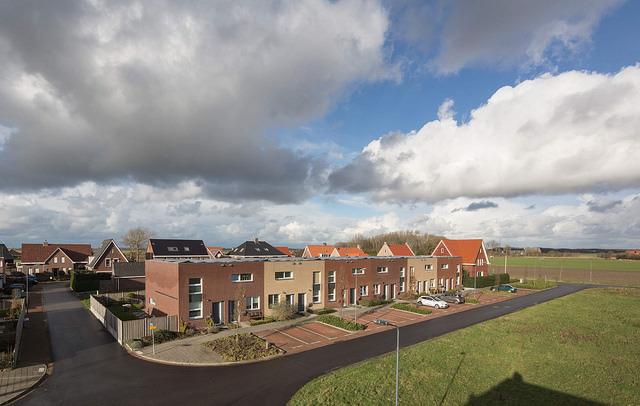How heat grids achieve more CO2 reduction

In order to reach the climate goals in 2050, we must increase the sustainability of almost seven million dwellings and one million buildings in the Netherlands. District heating should be an important part of the solution. The Planbureau voor de Leefomgeving (PBL) has substantially lowered these expectations by passing on the Climate Agreement draft. How can we increase the potential of district heating after all?
The passing of the Climate Agreement draft was disappointing for the Built Environment table.[1]
Especially where district heating was concerned. In March 2019, the PBL did not go beyond a reduction of approximately 1.0 megatons per year in 2030. And that's not even the most positive estimation. This amount will become even 0.1 megatons per year less due to the fact that additional gas boilers still will be needed to deal with peak demand.
There are several reasons for that low estimate. The mathematicians of the PBL don't believe that it's realistic that 80,000 house equivalents per year will be connected to district heating, because the three large installers that build heat grids only have a limited installation capacity. Additionally, the subsidy budget is limited, and connecting to district heating is currently unprofitable.
Too busy with new heat grids
The PBL also assumes that all new grids will have sustainable heat sources, but that heating companies will be so busy with this that turning the existing grids into more sustainable will not be possible for a while. Stroomversnelling sees four possibilities for using district heating to achieve more CO2 reduction after all.
1. Decrease and standardize the supply temperature of new district heating
The best way to stimulate the energy transition is to choose a temperature for new district heating that is as low as possible from the very start. A low-temperature district heating gives dwelling and building owners an incentive to insulate their homes substantially, thus reducing their heat demand. An important benefit is that low-temperature heat can be supplied by a wide range of local, sustainable heat sources, such as data centers and supermarkets.
Living costs guarantee
Luckily, the PBL already assumes, in their calculations, that dwellings are insulated before they are connected to district heating. This means that the district heating can run at medium temperature (70°C supply). PBL has included an average of € 10,000 per home for the insulation costs. The PBL also uses a housing costs guarantee for dwellings connected to district heating, which means that the housing costs after connecting to district heating won't be higher than before.
Insulation incentive
Stroomversnelling pleads to legally decrease the supply temperature of new district heating to a maximum of 70 °C. In addition, strong incentives must be introduced to build grids with an even lower supply temperature. The insulation incentive resulting from this, gives rise to substantially less heat being required to heat dwellings that can profit from the scarce sustainable heat sources.
Stroomversnelling uses a maximum net heat demand of 50 kWh per square meter per year for an existing home, which is set at net zero energy. This standard is perfectly attainable for the most common dwellings. For monuments or detached dwellings, an adjusted standard is required. According to Stroomversnelling, a heat demand standard and an energy performance guarantee are necessary in order to offer dwelling owners certainty.
2. Adjust the energy performance compensation in order to make heat possible
Housing associations have the possibility to earn back the costs of sustainability improvements to their housing stock via the energy performance fee (EPV). However, the EPV regulation only applies to dwellings that see to their own energy requirements on their own land. This means the EPV isn't an incentive to renovate high-rise apartments to net zero energy. Stroomversnelling proposes two solutions for this: administratively connect the new sustainable heat source to net zero energy projects and expand the EPV regulation to include net zero energy dwellings with a connection to sustainable district heating. By making this possible, the building of district heating for existing stock gets a huge boost.
3. Make grid operators responsible for building heat distribution grids
The building and operating of large new heat distribution grids should become a legal obligation for the current grid operators of electricity and natural gas: Liander, Enexis, and Stedin. The benefit of this is that they become open, cost-transparent grids on which multiple suppliers can be active. This stimulates the access of new market parties and leads to innovations and cost reduction with the building of new grids. As a result, the five large heating companies will be able to also make the existing grids more sustainable in a few years. This can be arranged in the new Heat Act (2.0).
4. Build the new district heating in the neighborhoods where these are the most profitable
New district heating is the most effective in neighborhoods with relatively many high-rise buildings and collective gas boilers. The unprofitable top is lower here and more dwellings can be connected using the same subsidy. Once innovations lead to lower building costs, neighborhoods with more land-bound dwellings can also be connected to district heating. That will be after 2030. This way, district heating can still make an important contribution to the sustainability of the built environment. Read the complete position of Stroomversnelling here.
[1] On 28 June 2019, the Dutch government presented the new climate agreement (Klimaatakkoord). It contains a set of measures drawn up in consultation with various parties across Dutch society, including the building sector, through a "Built Environment table". The climate agreement aims to reduce CO2 emissions in the Netherlands by setting a national reduction goal of 49% by 2030 compared to 1990



